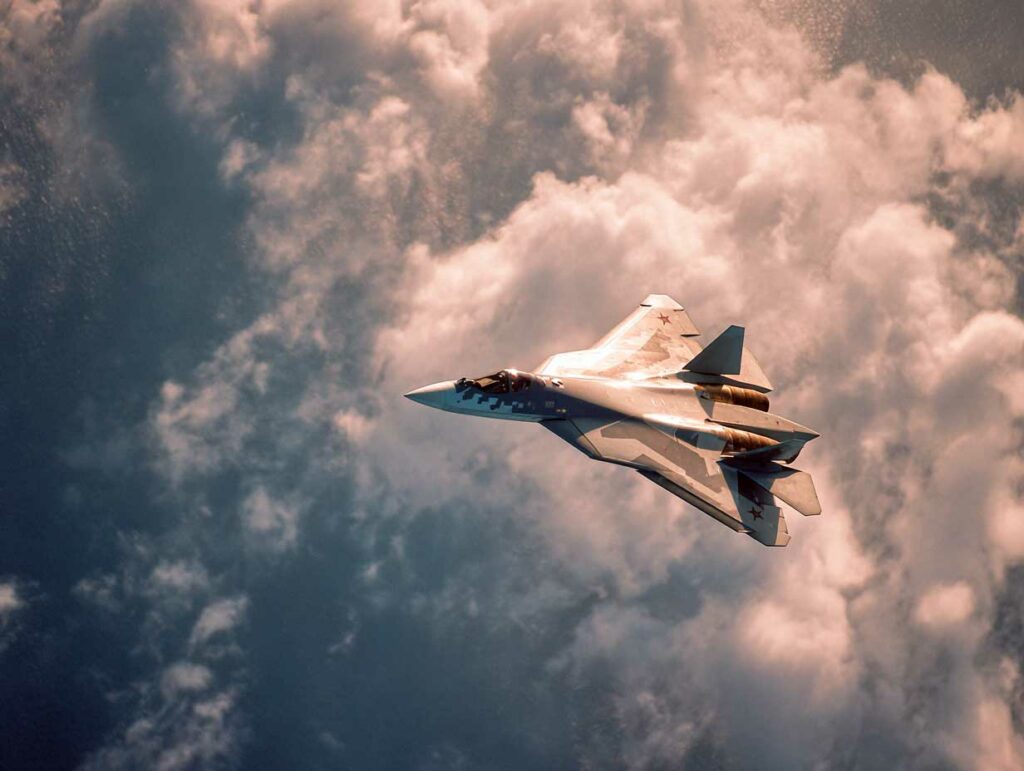
India has rejected the purchase of US F-35s, preferring industrial partnerships with Russia involving the Su-57E and Su-35M.
A national strategy focused on industrial autonomy
India has officially declined the US offer for the F-35 stealth fighter jet, marking a strategic choice in favor of industrial autonomy in defense. Despite repeated diplomatic pressure from Washington, the Indian government has reaffirmed its commitment to prioritizing programs involving technology transfer and local production. This approach is in line with the “Make in India” policy, launched to develop an independent defense industrial base and reduce dependence on imports.
The US offer, made directly by President Donald Trump during a meeting with Prime Minister Narendra Modi, proposed integrating India into a broader strategic partnership, including the sale of the F-35. However, no guarantees of technology transfer or local production were attached to the proposal, which is a red line for New Delhi. The decision to reject the offer is therefore not based on the performance of the F-35, but on the lack of added value for Indian industry.

A refusal that illustrates India’s defense priorities
For several years, India has been changing its arms procurement strategy. Rather than buying turnkey systems, it favors contracts offering tangible industrial compensation. This doctrine is based on three pillars: technology transfer, manufacturing on Indian soil, and integration of local components.
Experience with American platforms such as the MH-60R Seahawk helicopters and P-8I maritime patrol aircraft has strengthened bilateral ties, but these purchases have not established a sustainable industrial capacity in India. Conversely, cooperation with Russia on the Su-30MKI has proven that a model based on domestic manufacturing can be viable. More than 220 Su-30MKIs have been produced locally in Nashik by Hindustan Aeronautics Limited (HAL), with a localization rate of over 50%.
In this context, the US offer seems out of step with New Delhi’s current expectations. The Ministry of Defense now considers that simply acquiring equipment with no industrial impact is insufficient. As a senior Indian official stated: “Buying is not enough. We want to build.”
A Russian proposal aligned with Indian objectives
Unlike the US approach, Russia has been able to anticipate India’s requirements. In July, Moscow submitted a proposal structured around two fighter jets: the Su-57E, an export version of the fifth-generation stealth fighter, and the Su-35M, a multi-role air superiority aircraft.
The Su-57E is the centerpiece of the Russian plan. Rostec, in partnership with manufacturer Sukhoi, has proposed a complete transfer of technology with domestic production at the HAL plant in Nashik. The program envisages a localization rate of up to 60%, with the possibility of integrating Indian weapons and systems such as the Astra missile, the Rudram missile, and the AESA Virupaksha radar.
The proposed schedule includes an initial delivery of 20 to 30 aircraft within three to four years, followed by a ramp-up in local production. Ultimately, up to 100 fighters could be delivered by the early 2030s.
At the same time, the Su-35M is being offered as a quick fix to compensate for the Indian Air Force’s fighter shortage. This aircraft shares up to 80% of its parts with the Su-30MKI, which facilitates maintenance, logistics, and pilot training. Russia is counting on the interoperability effect to win over New Delhi, which is seeking to avoid logistical fragmentation in its fleet.
An Indian fleet under pressure and undergoing change
The rejection of the F-35 must also be seen in a broader context: the urgent modernization of India’s air capabilities. The Indian Air Force currently has around 30 fighter squadrons, far from the 42 required to deal with a potential double front with China and Pakistan.
The fleet is aging. Many MiG-21 Bison aircraft must be retired by 2025, while the replacement of the Jaguar and MiG-27 remains partially open. Local programs such as the Tejas Mk2 and the Advanced Medium Combat Aircraft (AMCA) will not be operational for several years. In this transitional phase, India must strengthen its squadrons with aircraft available in the short term, while preserving its industrial sovereignty.
It is in this context that the Russian offer seems more suitable, with rapid deliveries and a national production framework. Logistical compatibility with aircraft already in service also favors this option.
A strategic choice beyond technology
The F-35 is undoubtedly one of the world’s most advanced fighter jets in terms of stealth, sensor fusion, and joint capabilities. However, its acquisition imposes operational and diplomatic constraints that India is unwilling to accept.
First, the F-35 is heavily integrated into NATO networks, which would limit India’s strategic independence. Second, the conditions for using the F-35 are very restrictive, particularly in terms of maintenance, access to source codes, and autonomous use of stealth capabilities. Finally, operating costs are among the highest in its class, with a flight hour cost of over $30,000.
India, which is developing its own technological base, has no interest in depending on a closed system. The rejection of the US offer is therefore not a blanket rejection, but an affirmation of clear priorities: produce, transfer, and integrate.

A redefinition of defense partnerships
This report illustrates a shift in Indian defense partnerships towards a logic of bilateral technology exchange rather than unilateral purchases. It also reflects the relative decline of US influence in certain key segments of the Indian defense market, despite isolated successes.
Russia, despite its own industrial limitations, offers India what the US refuses: access to manufacturing, co-design and autonomy. In return, India secures strategic capabilities while strengthening its industry.
The next test will come from upcoming tenders, notably the MRFA (Multi Role Fighter Aircraft) program for 114 fighter jets, in which US and European competitors will have to rethink their approach if they want to remain competitive.
War Wings Daily is an independant magazine.